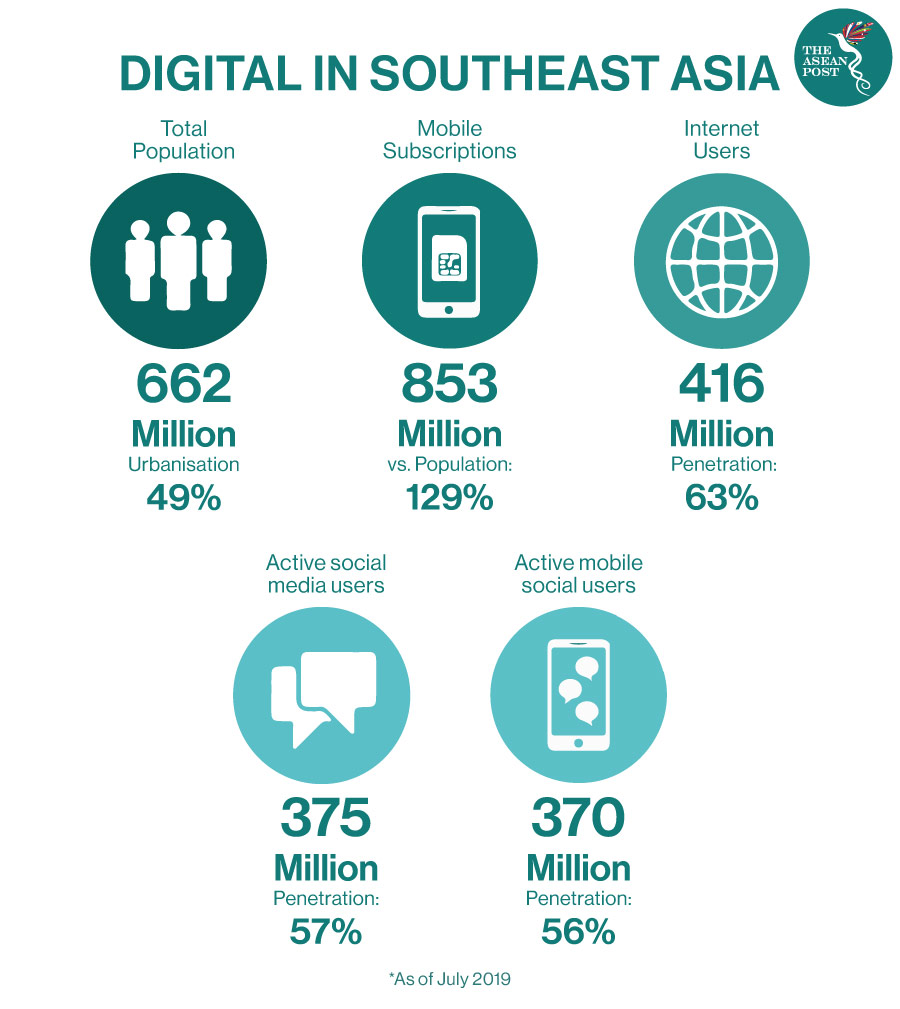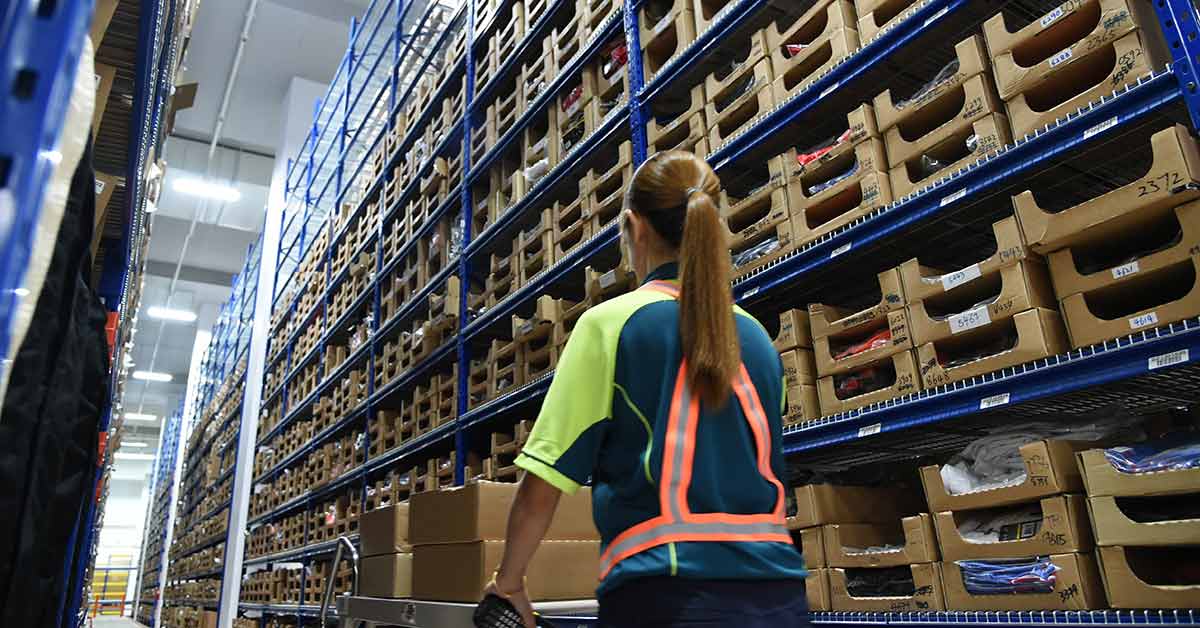Yesterday, The ASEAN Post published an article titled, “The Future Of Consumption In ASEAN” that discussed the four “mega-forces” identified by the World Economic Forum (WEF) that will determine the pace and scale of the region’s growth.
As ASEAN as a bloc is expected to become the world’s fourth-largest economy by 2030, the region’s consumer habits are also expected to change in that period. According to the WEF’s “Future of Consumption in Fast-Growth Consumer Markets: ASEAN” report, some of these trends will be accelerated by the current coronavirus crisis.
Consumer Spending To Double
ASEAN’s middle-class is projected to grow to a point that it will comprise 67 percent of the region’s total population by 2030. Thus, total consumption will double across the region, with the Philippines experiencing the highest consumption growth.
Whereas in Indonesia, about 75 percent of the population there will be middle-class, contributing to 72 percent of all spending in the country. Across ASEAN, roughly one million households could rise above the poverty line of US$1,000 in annual household income.
The region’s booming middle-class will result in three major implications; 1) ASEAN consumption will grow by 2.2 times to nearly US$4 trillion by 2030; 2) A boost in the food and beverage (F&B) sector as ASEAN consumers will continue to spend more on F&B than on any other product category; and 3) Growth in sectors such as electronics, education and transport, are expected to experience seven to eight percent growth annually.
Boundaries Of Premium And Value Shopping Will Blur
As ASEAN consumers go into social isolation amid the pandemic, consumption behaviour has changed significantly. Daily essentials, and goods focused on convenience and well-being have spiked, and are likely to see high demand even in a post COVID world.
Over the next decade, “consumers will be willing to pay a premium for convenience, well-being and personalisation,” states the WEF.
However, they will still remain value-conscious as 62 percent of high-income consumers surveyed by Bain & Company in 2019 rated price as a top purchase criterion.
Digital Ubiquity And Technology
The pandemic has accelerated digital adoption worldwide, with many consumers making their first digital purchases and existing consumers spending even more time online. According to Bain & Company, across the region, total streaming time over mobile phones grew 60 percent from 20 January to 11 April this year. Today, ASEAN consumers spend up to 1.2 times more online than the global average. By 2030, an estimated 80 percent of the ASEAN population will be online.
In addition, technology-enabled platforms will also tear down socio-economic walls. As ASEAN consumers leapfrog into digital adoption, this will enable the underserved to access basic services such as healthcare, education and financial services. The WEF report states that mobile banking penetration is expected to reach levels 1.3 times that of the United States (US).

Local And Regional Competitive Winds Will Prevail
Local and regional brands are outgrowing global players. For example, it was revealed in the WEF report that overall, local companies have outperformed multinationals by nine percent annually over the past five years in the hot drinks sub-category.
In Indonesia according to Bain & Company, 80 percent of consumers prefer local brands to global brands, especially in food categories. This trend will likely continue even in times of crisis. During the pandemic, local F&B conglomerates are also at an advantage, as consumers seek for lower prices, availability with preference for brands that offer farm to factory visibility.
In specific categories, Asian brands from South Korea and Japan are also seeing a growing influence in the region compared to Western brands. Other than that, within Indonesia and Malaysia, Islamic branding is also taking off, raising the potential for the region to become the global centre for Muslim brands.
Moving Beyond Omni-Channel
Omni-channel retailing will prevail across ASEAN in 2030, predicts the WEF. While e-commerce will grow the fastest, reaching 13 percent penetration from three percent today, offline channels will still be relevant.
“Consumers will switch between online and offline throughout their consumption journey. As a result, social media, e-commerce, everyday apps and offline channels will converge into an integrated platform,” stated the WEF in its report.
Convenience Is The New Currency
In a Bain & Company study, two out of three urban consumers in the region rank convenience as one of their top criteria for purchases. In fact, two out of three consumers are even willing to give up data privacy for convenience.
This means that there is an opportunity for “super-apps” to provide a one-stop shop, leveraging on data to extend to multiple services. An example of this is China’s WeChat, described as an “app for everything” which provides text messaging, location sharing, video conferencing, an e-wallet and video games, among others.
Health And The Planet Non-Negotiable
According to the WEF report, 80 percent of surveyed respondents said they value sustainability and have made lifestyle changes to be eco-friendlier.
Sustainability is a growing requirement across ASEAN markets, with emerging ASEAN – Vietnam, Indonesia and the Philippines – leading the effort. Although the region lags behind global standards, demand will accelerate in the next 10 years as consumer and institutional awareness grows, along with a willingness to pay.
“ASEAN is poised to become a dramatic consumption opportunity, driven by four mega-forces: strong demographic trends; rising income levels; geopolitical shifts increasing foreign investment; and digital advances opening new consumer markets,” said Praneeth Yendamuri from Bain & Company.
In order to achieve this vision, committed collaboration among stakeholders is required, through innovative and inclusive business models supported by a favourable policy environment, he added.
Related Articles:
